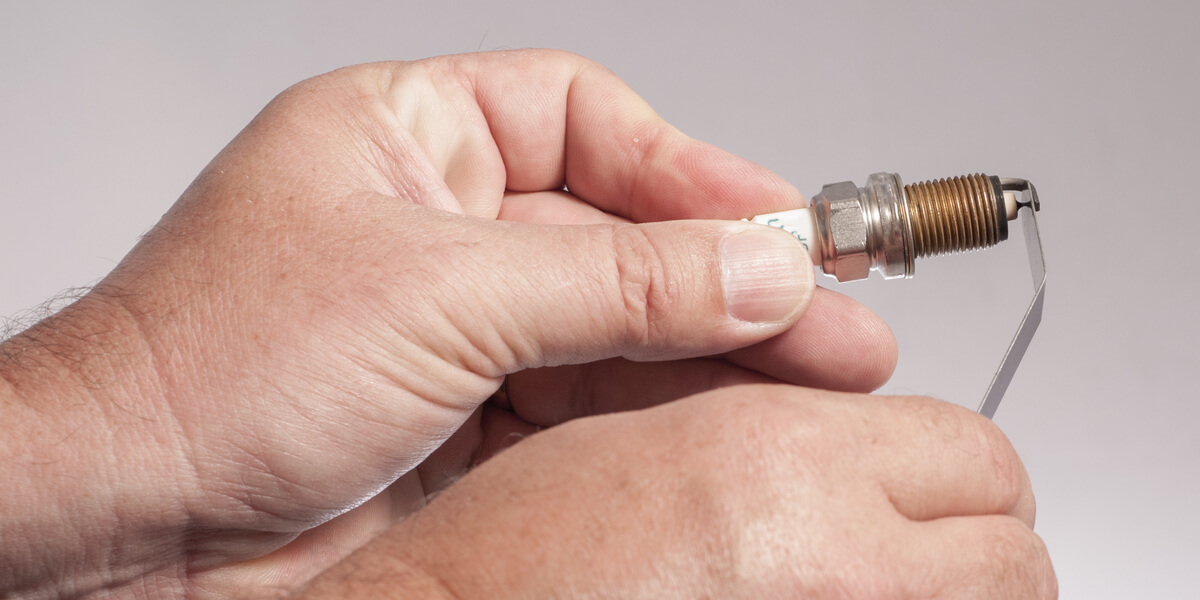
Spark plugs are one of the essential parts of the engine. Using a high-quality set will make your engine run smoother, more fuel-efficient, and reduce the risk of breakdowns. However, just purchasing the most expensive ones won’t help much. The plugs must be tailor-made for your engine. One of the most common problems people get after replacing their spark plug is an incorrect spark plug gap leading to poor performance and sometimes even misfires. Luckily, you can easily gap spark plugs using the right gapping tool and make sure they burn fuel as efficiently as possible.
Before replacing your spark plugs, though, it’s best to first cross-reference the plugs. In other words, you need to find the right spark plugs for your engine. Most spark plug manufacturers have cross-referencing tables and charts to help you do that. Simply identify the model of your existing spark plugs and the table will help you find alternatives. However, even when you find spark plugs designed specifically for your vehicle, the gap between the electrodes might still be incorrect. Almost every spark plug you purchase is already pre-gapped. However, the gap might change during shipping if mishandled. A slight bump on the spark plug box is sometimes enough to ben one of the electrode, modifying the gap.
Some spark plugs are also designed to fit more than one vehicle. Even if the same plugs fit on a Honda Civic and a Toyota Corolla, it doesn't mean that both cars use the same gap setting. If you buy the OEM plugs directly from the dealer, the gap should have been set for your specific car model but it's different from aftermarket plugs from the auto part store.
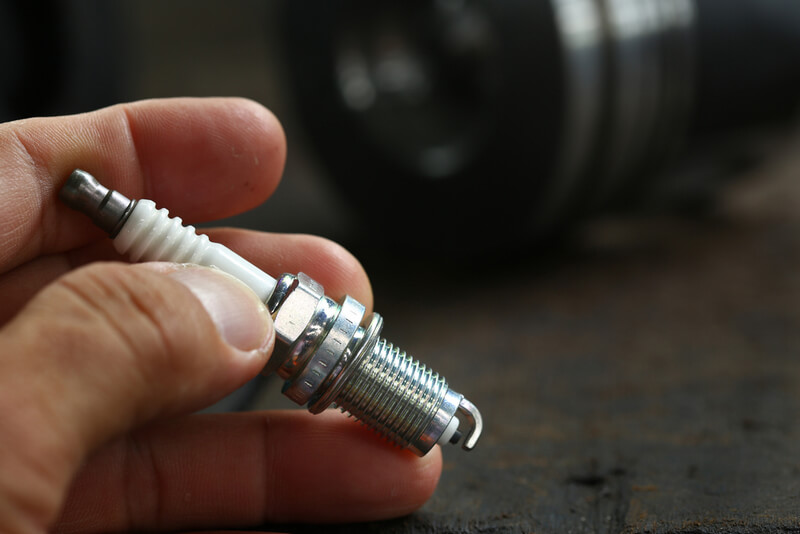
On top of that, the gap between the electrodes can change as the electrodes wear out or if carbon deposits build upon them. When that happens, your engine might suffer from misfires and, even worse, might lose power on inclines and consume more fuel. Fortunately, instead of purchasing new ones, you can clean and re-gap the spark plugs to extend their life.
Why is the Gap Between the Electrodes Important?
It’s all in the way a spark plug works. Basically, each one uses high voltage electricity from the ignition coil to jump a spark between two electrodes. The spark ignites the air-fuel mixture, which then creates power for the engine to run.
The issue here is the compression inside the combustion chamber. The spark plugs ignite the fuel when the piston is at the uppermost position, or when the air-fuel mixture is fully compressed. In this position, the plugs have a hard time creating a spark. That’s why the gap between the electrodes is small.
On the other hand, a tight gap won’t create a powerful spark. The wider the space between the electrodes, the more powerful the spark is. A good spark will ignite the air-fuel mixture sooner, cleaner and more efficiently.
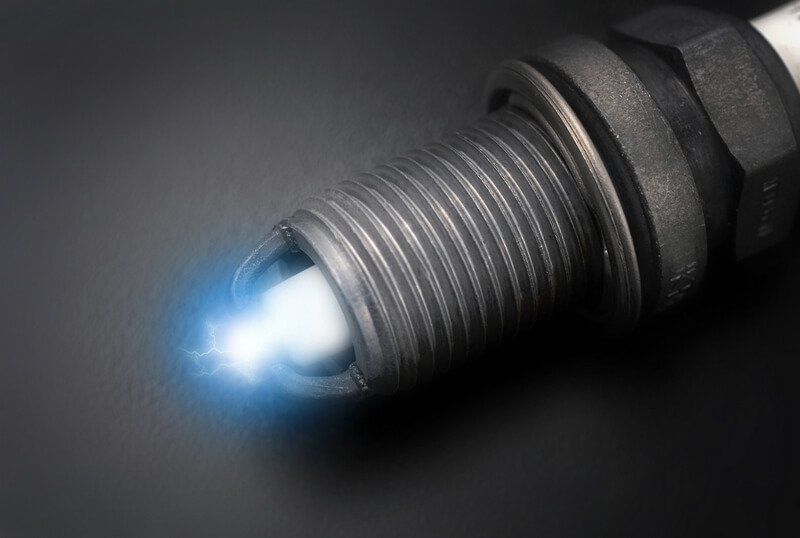
When engineers design engines, they have to compromise and decide on the gap setting providing the best of both worlds. Usually, high-compression engines have spark plugs with smaller gaps, but multiple electrodes. Low-compression engines have a wider spark plug gap, but only one ground electrode.
If you are unsure about what the gap should be on your car, you can usually find spark plug gap information inside your car's repair manual. By having correctly gapped spark plugs, you’ll ensure that your engine runs as smooth as it can. Installing spark plugs that are designed for other motors, though, might create all sorts of issues, no matter how they are gapped.
What Tools Do I Need to Gap Spark Plugs?
Several different tools are available to gap spark plugs. All of them should do the job just fine. Each mechanic prefers one type or the other for different reasons and they are all good. It's really just a question of taste here.
Coin-Style Gapping Tool
Coin-style gap tools are the cheapest option you’ll find. These “coins” are attached to a keychain and come in various thicknesses. Every coin is thicker on one side and thinner on the other. The thickness gradually increases, and on every stop, there is a mark (e.g., 0.030 inches). At the top of the coin, there is usually a small hole that you can use to adjust the electrode.

When using a coin-style gap tool, turn it until you reach the desired gap mark. If the spark plug gap is correct, the coin should stop turning right at the target. However, coin-style gap tools require gentle handling.
For example, if you inadvertently turn the coin too far, the gap between the electrodes might widen. Even worse, one of the electrodes might get damaged.
On top of that, coin-style tools can damage the coating on the electrodes. Modern spark plugs have electrodes coated in platinum or iridium, which helps with longevity and performance.
Wire-Style Gapping Tool
Wire-style gapping tools are superior to coin-style tools in almost every way. However, they are also slightly more expensive. Still, the difference should be negligible – it comes down to a few more dollars.
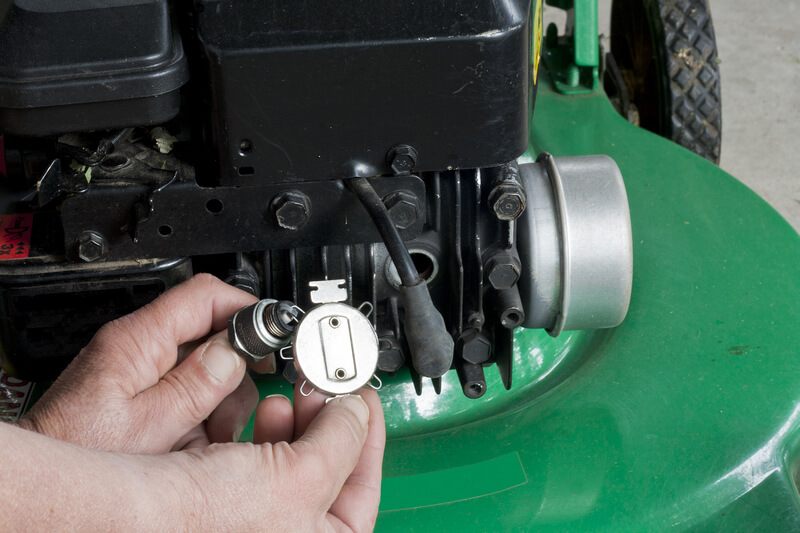
Instead of turning a coin, you use wires to measure the space between the electrodes. These tools also have additional parts that can be used to adjust the electrode.
The main drawback of wire-style gapping tools is that they only have 7 or 8 different presets available. Coin-style gapping tools, on the other hand, can set the gap to virtually any value between the minimum and maximum value of the tool.
If your spark plugs need to be gapped in between two of the settings, you might have a hard time getting it right. Tuners and high-performance mechanics working on race cars, trying to modify the original gap value to find the best setting for speed, for example, might also prefer coin-style gapping tools.
Blade-Style Gapping Tool
Blade-style gapping tools are the easiest to work with, but also the most expensive. If you gap spark plugs for a living, we strongly recommend going for a blade-style tool.
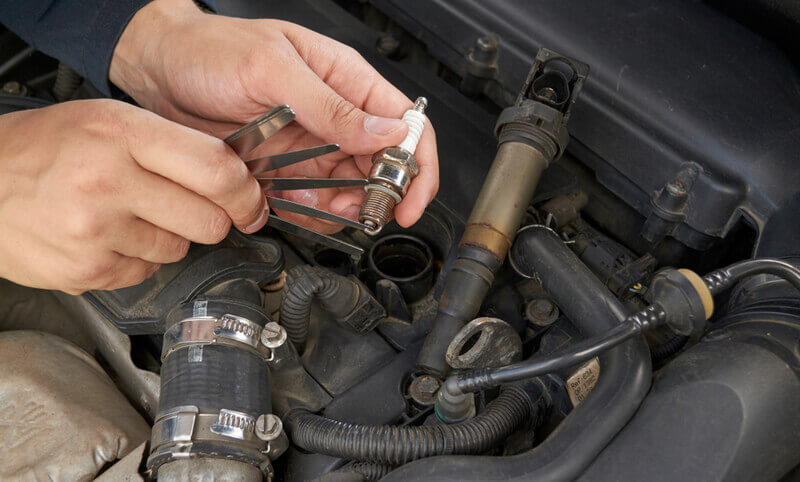
This tool has several blades attached, like in a pocket knife. Every blade is of different thickness, much like with the wires in the wire-style gapping tool.
The best thing about the blade-style gapping tool is that it can be used while you adjust the electrode. With the other means, you first adjust the electrode and then measure the gap.
Another good thing with blade-style gapping tools is that they also have other use than only measuring and adjusting spark plug gaps. In fact, this tool is also called by another name: a feeler gauge. Feeler gauges are used to measure the clearance between two parts, not only spark plugs. Mechanics mostly use feeler gauges to adjust the clearance between the rockers and valve stems as well as to measure the gap between the two ends of piston rings.
How to Correctly Gap Spark Plugs
Gapping spark plugs using the aforementioned tools is pretty straightforward. Follow the next steps carefully, and you will be finished in no time!
- Remove the plugs from the engine. If you need help with that, read our previous post on how to replace spark plugs.
- If you are adjusting the gap on used plugs, clean the electrodes thoroughly. The plugs will almost certainly have a residue on them, which can give a false reading. We recommend using alcohol (over 90%), a soft brush, or sandpaper to remove the soot. Brake cleaner also works fine. If you are installing new plugs, skip to the next step.
- Measure the gap between the electrode for each plug. If the gap is larger than specified, close the gap. If the gap is smaller, open the gap.
- When the gap is smaller than wanted, use the tool to adjust the electrode. Gently pull the electrode outward until you reach the desired gap. For closing the gap, position the spark plug vertically on a flat surface so that the electrode faces down. You can use the coin-style and wire-style tools as a base. Gently push the spark plug down until the gap closes.
- Measure the gap frequently or until you reach the desired width.
I can’t stress that enough, but always be gentle when bending the electrode. If it cracks, the spark plug won’t function properly anymore. Even worse, small metallic parts might damage the delicate components inside the combustion chamber. That can quickly lead to costly repairs. To be sure, always check the electrode for cracks before you screw it back into the engine.
How to Gap Spark Plugs Without Tool?
So, you want to gap spark plugs but don’t have the proper tools? Well, we strongly recommend against doing that. First of all, your eyes can’t really tell between 0.030-inch and 0.036-inch width. Then, using tools not designed for gapping might easily damage the electrode. And you already know that a cracked electrode can easily damage the inside parts of the engine. Lastly, did we tell you that gapping tools only cost a few bucks nowadays?
